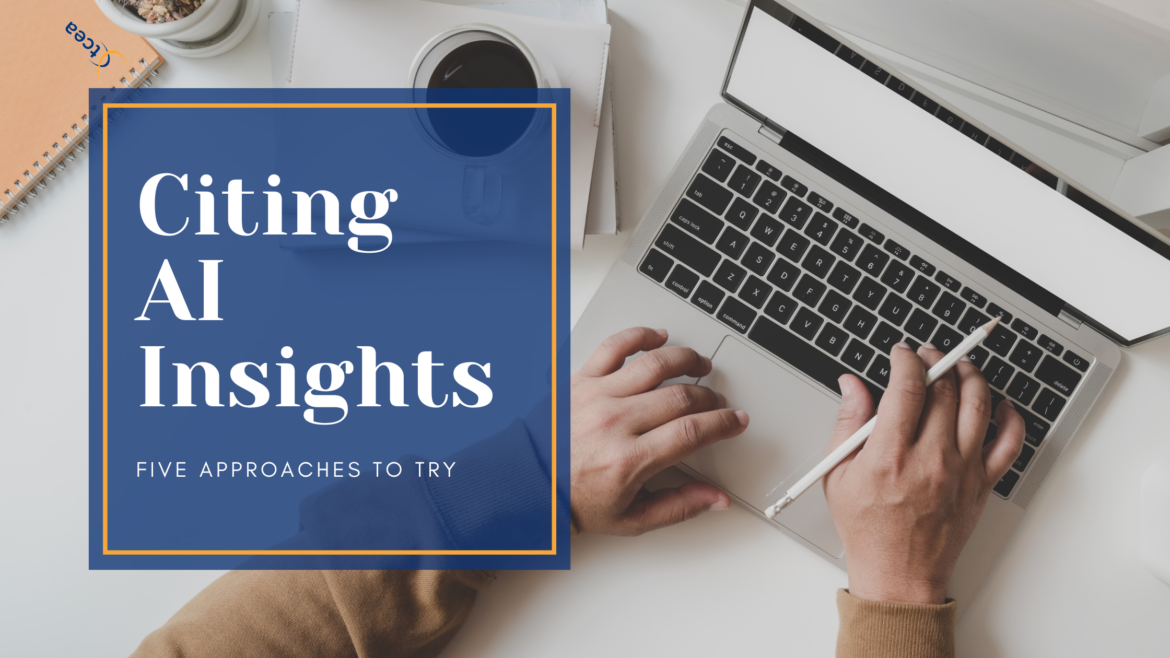Wondering about citing AI insights? Citing your work is important. Doing so ensures transparency. It says, “Not only did I get inspired by this amazing idea, I know who or what inspired me.” Let’s take a moment to explore how to best cite everyone’s newest friends for inspiring ideas. At the end, you’ll find a short guide for citing AI generated images, too.
Citing AI is new. It matters. When you cite, you’re honest. You say, “This idea came from somewhere. I know where.” Let’s talk about how to credit our new AI friends. They give us ideas. We should say so.
Claude. “Alternate lead” A.I. Archives, 25 July 2024, https://aiarchives.org/id/xuXMr1MLG8KMFcjzUEPb
Citation Creation
There are many tools that make citing traditional source of information easy. You may find this round up of citation tools worth reviewing. A quick list of the tools mentioned in that blog entry include:
- Zotero. A free and easy-to-use research and citation tool that helps you collect, organize, cite, and share your research sources.
- RefSeek. An academic search engine and citation tool that helps students and researchers find relevant and reliable information.
- Citation Machine. A free, ad-powered website that helps students create citations in a variety of formats.
- Mendeley. A free and open-source reference manager and academic social network that can help you organize your research, generate citations, and collaborate with others.
- ResearchRabbit. A free and easy-to-use tool that can help you stay organized and up-to-date on the latest research.
To that list of citation generators, I would add a few more. Let’s take a look.
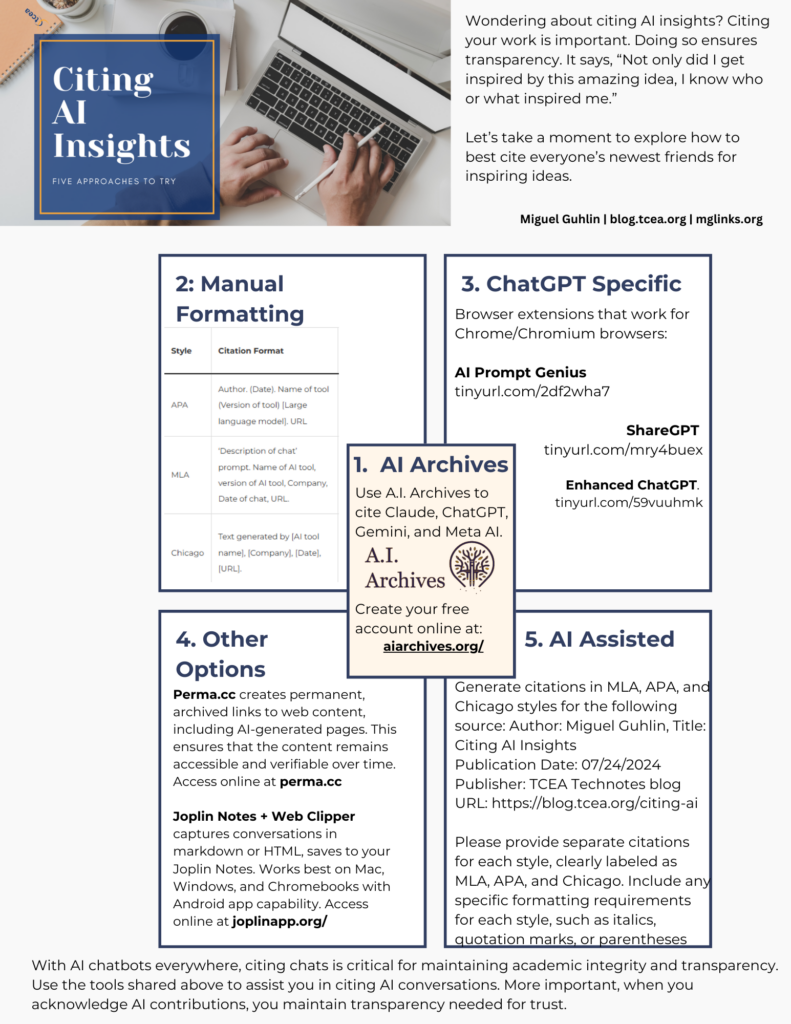
More Citation Generators
These citation generators are for more traditional websites. All work in your browser.
- BibGuru. This free plugin is designed to generate APA, MLA, and Harvard formatted citations.
- MyBib. It generates citations in over 9,000 styles, including APA, MLA, and Harvard, for webpages and PDFs, and allows users to copy, save, and export citations directly into their academic papers. It is free.
- Monica. Automates citation generation, bibliography creation, and academic writing, supporting multiple citation styles including APA, MLA, and Chicago. A limited free version with paid plans starting at $8.30 per month.
Now that more traditional website citation tools are out of the way, let’s take a look at some ways to easily cite AI chats. Let’s start with the slow approach.
Approach #1: Manual Formatting
Let’s start with an old-fashioned approach. You can, of course, do this but it can be laborious.
| Style | Citation Format | Example | In-Text Citation Example |
|---|---|---|---|
| APA | Author. (Date). Name of tool (Version of tool) [Large language model]. URL | Anthropic. (2023). Claude (Version 1.3) [Large language model]. https://claude.ai | (Anthropic, 2023) |
| MLA | ‘Description of chat’ prompt. Name of AI tool, version of AI tool, Company, Date of chat, URL. | ‘Overview of research on differentiated instruction’ prompt. Claude, Version 1.3, Anthropic, 4 Mar. 2023, https://claude.ai | (‘Overview of research on differentiated instruction’) |
| Chicago | Text generated by [AI tool name], [Company], [Date], [URL]. | Claude, response to ‘Analyze the impact of the Industrial Revolution on urbanization,’ Anthropic, March 7, 2023, https://claude.ai. | N/A |
Another approach is to track the relevant data (e.g. Author, date, title, URL, Company) and then to paste that into an AI tool of choice. Ask it to generate the citation for you. Try this prompt if that’s your goal:
Generate citations in MLA, APA, and Chicago styles for the following source:
[Insert source details here, such as author, title, publication date, publisher, URL, etc.]
Please provide separate citations for each style, clearly labeled as MLA, APA, and Chicago. Include any specific formatting requirements for each style, such as italics, quotation marks, or parentheses.
Here’s what that looks like with this prompt:
Generate citations in MLA, APA, and Chicago styles for the following source:
Author: Miguel Guhlin
Title: Citing AI Insights
Publication Date: 07/24/2024
Publisher: TCEA Technotes blog
URL: https://blog.tcea.org/citing-ai
Please provide separate citations for each style, clearly labeled as MLA, APA, and Chicago. Include any specific formatting requirements for each style, such as italics, quotation marks, or parenthesesThe result:
MLA (9th edition):
Guhlin, Miguel. "Citing AI Insights." TCEA Technotes blog, 24 July 2024, blog.tcea.org/citing-ai.
APA (7th edition):
Guhlin, M. (2024, July 24). Citing AI insights. TCEA Technotes blog. https://blog.tcea.org/citing-ai
Chicago (17th edition, notes and bibliography):
Guhlin, Miguel. "Citing AI Insights." TCEA Technotes blog, July 24, 2024. https://blog.tcea.org/citing-ai.
But that’s for a traditional website. What about AI? Let’s find out using an easier approach.
Approach #2: A.I. Archives
A.I. Archives makes citing easy. It’s simple with Claude, ChatGPT, Gemini, and Meta AI. You can cite them all. The tool has videos to help. One video is below (Claude). Topics include how to organize, cite :
Simply add the browser extension, and you will soon see two icons in your favorite AI chatbot. These icons allows you to share in public or private way (see below):

They also offer the following:
- A link for easy sharing
- A save bookmark for the future (login to save)
- Citation button to get formatting in APA, MLA, and/or Chicago style
You can see this in the screenshot below:
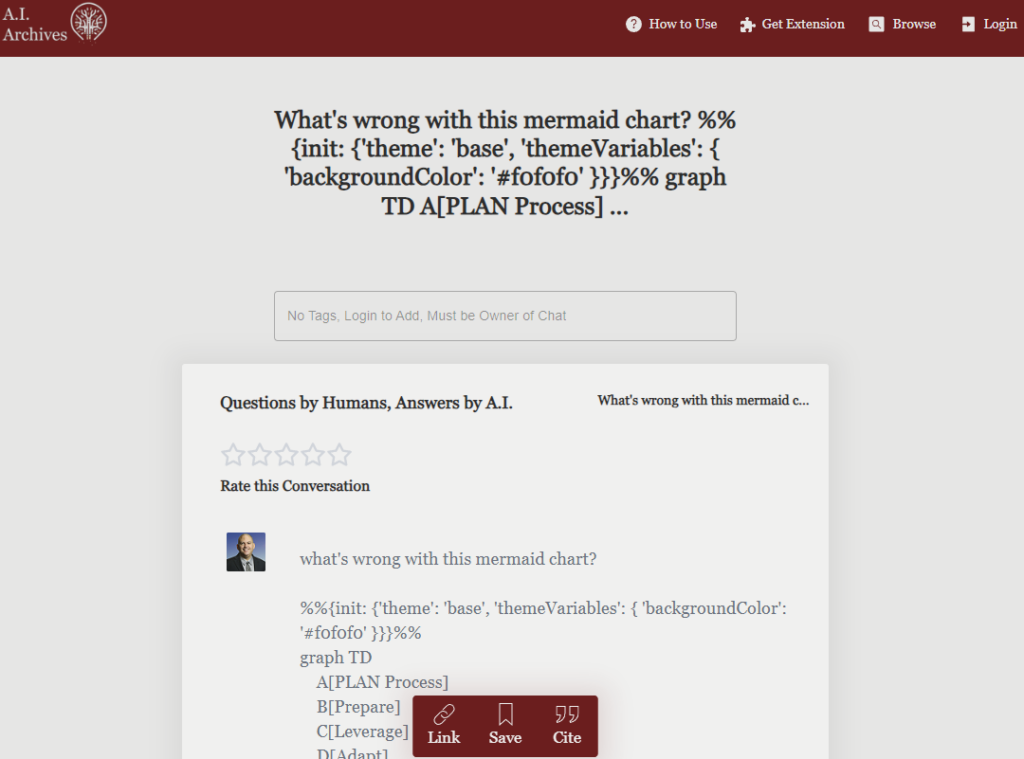
This is the easiest approach and all citations are saved to your Google account. Learn more about it online.
What’s more, you can also search or browse the A.I. Archives (the public ones) that others have saved:
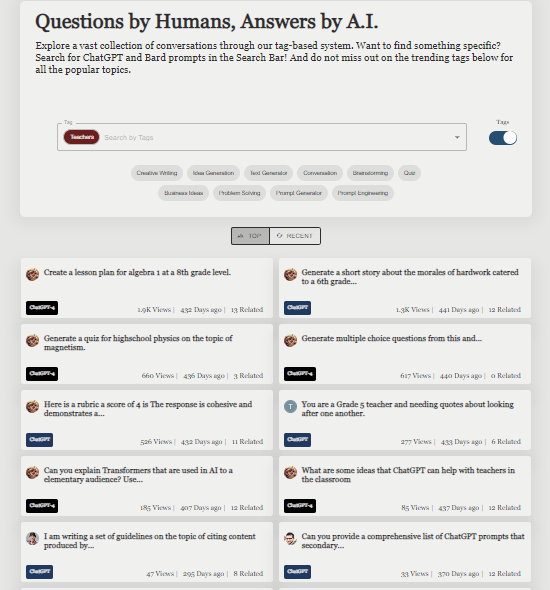
One final option is to organize your saved AI conversations via a convenient dashboard, as shown below:
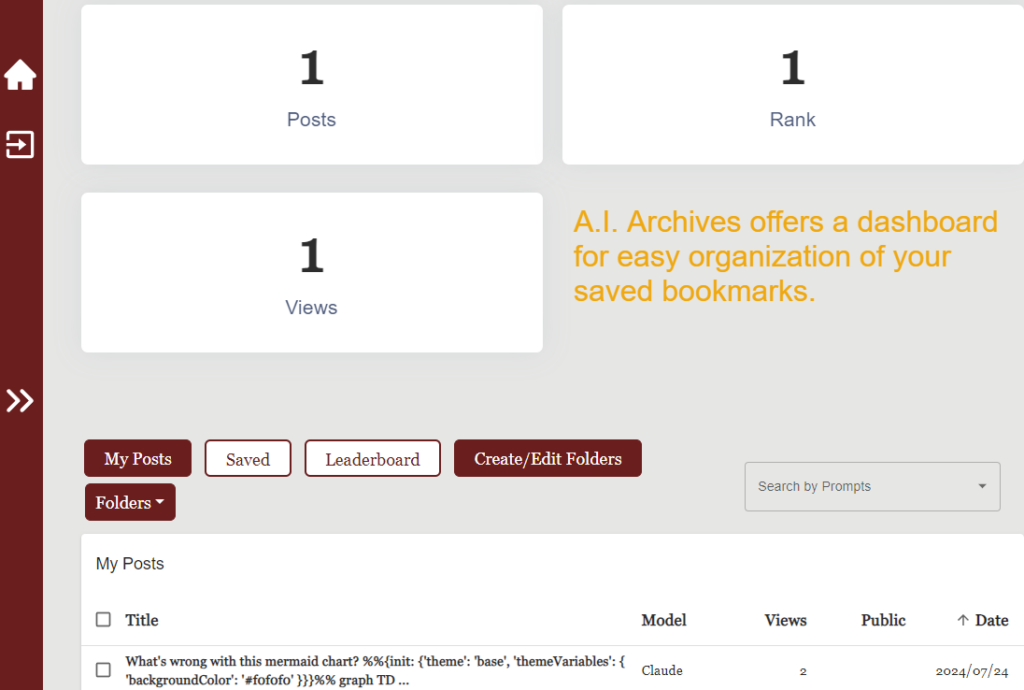
Approach #3: ChatGPT Specific
As wonderful as A.I. Archives is, you may want to explore some alternatives for ChatGPT. Here’s the short list of browser extensions for your consideration.
- AI Prompt Genius. This Chrome/Chromium browser extension makes it easy to export (save) their conversations in a variety of formats.
- ShareGPT. A browser extension, it tries to make exporting and sharing ChatGPT conversations. Export formats include images, PDFs, or shareable links.
- Enhanced ChatGPT. This browser extension includes chat export and prompt templates, but more importantly, export current chat to Markdown.
Approach #4: Perma.cc
Another solution takes a different approach. Harvard Law School Library is a leading organization responsible for maintaining referenced content. Perma creates permanent, archived links to web content, including AI-generated pages. This ensures that the content remains accessible and verifiable over time. It works well for capturing webpages that may expire or disappear.
You can see the process in this image below:

Approach #5: Joplin Notes
One of the tools I rely on to keep track of my AI prompts and results is Joplin Notes. Joplin, a free open source tool, was not designed to interact with AI. It’s more of an Evernote like note-taking tool. That said, it offers a browser extension. That tool is the Joplin Web Clipper.
You can use that browser extension to capture website content.
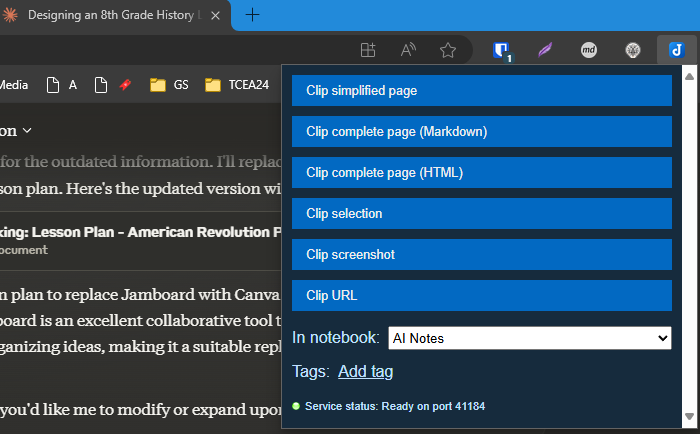
You can see a captured conversation (complete page in markdown) below:
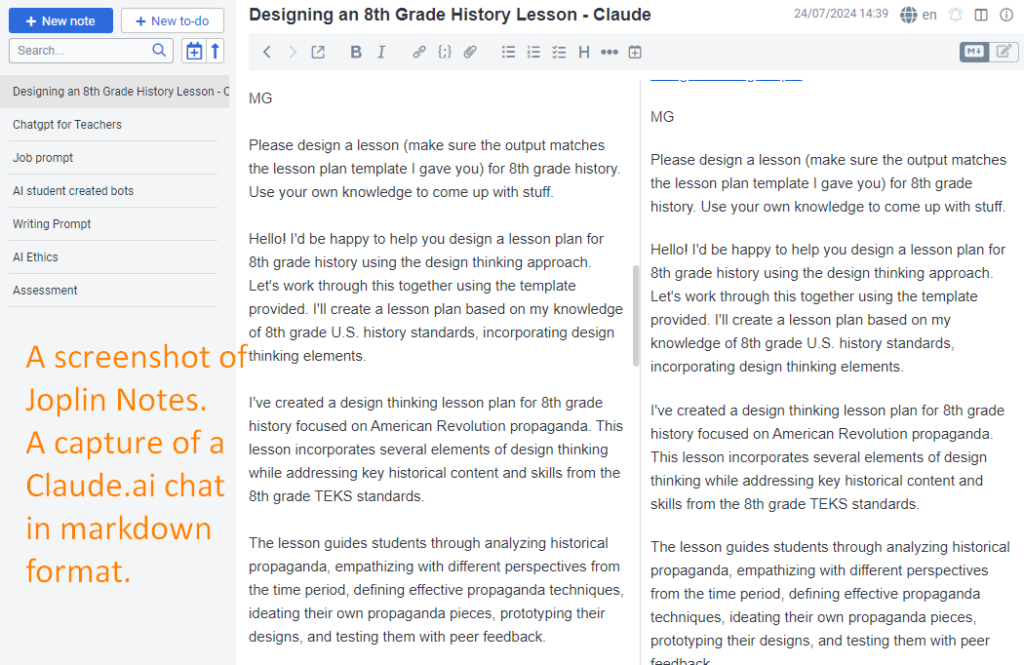
Bonus Tool: Claude Exporter
(There’s also a ChatGPT Exporter)
If you use Claude.ai, you may have wished for an easy way to get a copy of the entire conversation (a.k.a. chat) you had within the chatbot. If so, then you might want to add the Claude Exporter browser extension. It allows you to export, or get a copy of, any Claude.ai chat you may be in. It works in chats within a Claude Project, too. This makes it handy when you are wondering, what process did I follow to get this amazing result.
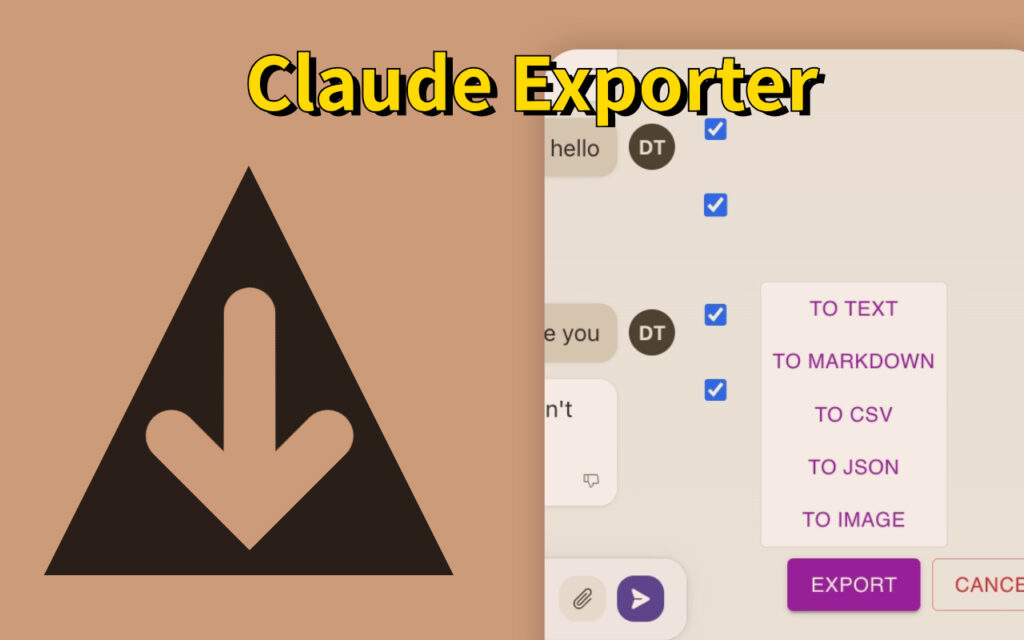
This makes it handy when you are wondering, “What process did I follow to get this amazing result?” This does not offer any citation options, but is useful when you want a complete copy of the chat.
Citing AI Generated Images
Citing AI generated images has not yet been formalized. That said, you can cite AI-generated images as figures in MLA. Remember to follow these guidelines:
- Include the prompt used to generate the image.
- Specify the AI tool, version (if known), and company that created it.
- Include the date the image was generated.
- Provide a website URL if the image is publicly accessible.
- Follow your organization’s (or the publisher’s specific guidelines) as they may have preferences for citing AI-generated content.
Now, let’s take a look at some examples for MLA, APA, and Chicago.
MLA
In-text (caption):
Fig. 1. “Prompt text” prompt, AI Tool Name, Version (if known), Company Name, Date Generated.
Works Cited entry:
“Prompt text” prompt. AI Tool Name, Version (if known), Company Name, Date Generated, URL (if available).
Example:
Fig. 1. “A watercolor painting of Batman reading a book in a library” prompt, DALL-E, version 2, OpenAI, 21 Aug. 2023.
“A watercolor painting of Batman reading a book in a library” prompt. DALL-E, version 2, OpenAI, 21 Aug. 2023, labs.openai.com/s/D4u19kmQHkzTIucl9C1fW6Gf.
Although APA has not yet issued specific guidance, here are some examples:
APA
In-text (caption):
Figure X. Description of image. AI Tool Name (Version), by Company Name, Year. URL (if available)
Reference list:
Company Name. (Year). AI Tool Name (Version) [AI image generator]. URL
Example:
Figure 1. A watercolor painting of Batman reading a book in a library. DALL-E (Version 2), by OpenAI, 2023.
OpenAI. (2023). DALL-E (Version 2) [AI image generator]. https://www.openai.com/dall-e-2
Chicago
For Chicago style, simply cite AI-generated images like you do other images:
Caption:
Figure X. “Prompt text,” image generated by Company’s AI Tool, Date Generated.
Bibliography:
Company Name. “Prompt text.” Image generated by AI Tool Name. Date Generated. URL (if available).
Example:
Figure 1. “A watercolor painting of Batman reading a book in a library,” image generated by OpenAI’s DALL-E, August 21, 2023.
OpenAI. “A watercolor painting of Batman reading a book in a library.” Image generated by DALL-E. August 21, 2023. https://labs.openai.com/s/D4u19kmQHkzTIucl9C1fW6Gf.
Parting Thoughts
With AI chatbots everywhere, citing chats is critical for maintaining academic integrity and transparency. Use the tools in this blog entry to assist you in citing AI conversations. More important, when you acknowledge AI contributions, you maintain transparency needed for trust.

